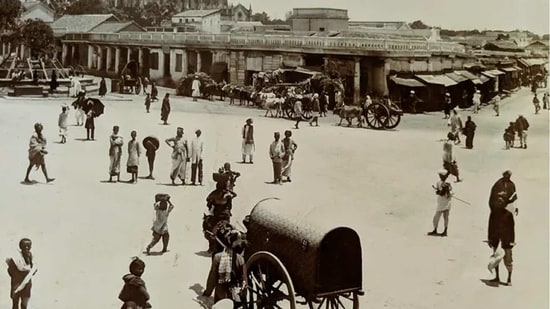3 waves of migrations that shaped Bengaluru
According to the 2011 census, out of 10 people in Bengaluru, four are migrants.
Bengaluru was a city that was made on a call for migration. Kempegowda, the founder of the city, made a clarion call for traders and other craftsmen to make the new city their home in 1537 after laying its foundation. Centuries later, Bengaluru is one of the most cosmopolitan, multi-ethnic and multi-lingual cities in the country. Historians say three waves of migrations made the city what it is today.

According to 2011 census, out of 10 people in Bengaluru, four are migrants. A person is considered a migrant if he is staying at a place other than his or her place of enumeration. Since 42.12% of Bengaluru’s population originate from outside the district or the state, after Mumbai, Bengaluru has the second-largest migrant population in India.
In Census 2001, inter-district and inter-state migrants constituted 30.27% of the city’s population. Over the next decade the migrant population increased by more than 12% points, making them the fastest-growing community in the city.
For historians, these numbers are not surprising because of the waves of migration the city witnessed over the centuries. Historian Suresh Moona said, “It was an equivalent of modern-day investors’ meet. When Kempegowda built his mud fort in 1537, a call was made for traders and other craftsmen to move to the new city. He knew that unless there is no thriving trade, a city can’t grow. In fact, many areas in Bengaluru were named after the occupations such Akkipet (rice), Ragipet (Millet) among others.”
He said the tradition continued with Tipu Sultan, who invited craftsmen from different parts of the country to live in Bengaluru. Most of these skill labourers migrated to Bengaluru to support Tipu’s military industry.
The remanence of the Tipu era migration still remains in Bengaluru, the Kalasipalaya areas in the heart of the city, was a settlement of Kalsi, the expert tent-pitchers and organisers of military camps of Tipu’s army.
However, the first wave of migration that changed Bengaluru’s demography, took place during the time of the British. Even though the British wanted to set up their cantonment in today’s Ramanagaram in Mandya district, the military engineers found Bengaluru’s topography and proximity to other cities strategically important.
“When the British started constructing the cantonment area since they had a base in the Madras presidency, they brought in skilled labourers and traders as part of the development of the cantonment. This is one of the reasons why the cantonment area in Bengaluru has a large Tamil speaking population,” said Moona.
“While the migration before independence was limited largely to the Tamil speaking region, post-independence the emergence of industry and public sector undertakings changed the patterns of migrations,” said Janaki Nair, a professor of modern Indian history at the Centre for Historical Studies at Jawaharlal Nehru University.
After Independence, Begaluru became the ideal location for strategic industries as it was away from international borders and its proximity to other major cities. The next big wave of migrants hit Bengaluru in the 1950s and 60s when major public sector undertakings — such as Bharat Electronics and Hindustan Aeronautics — made the city their base.
A research carried out by Times Research Foundation in the 1980s shows during the peak of Bengaluru’s industrial era in the 1980’s, 14% of Bangalore’s population was engaged in industrial work associated with the large-scale manufacturing economy led by the public sector undertakings.
Both Moona and Nair agreed that from having a large migration of Tamil speaking areas, the emergence of the industries resulted in a wider pool of migrants, especially from Kerala, Andhra Pradesh and Odisha etc. The linguist influences in the city too changed during this period of time.
As per the 2011 census, Kannada speaking population is only 46%, while Tamil speakers constitute 13.99% of the population, followed by Telugu (13.89%), Urdu (12%), Hindi (5.4%) and Malayalam (2.8%).
As the city was through another cultural metamorphosis, came globalisation. The open markets and globalisation made Bengaluru the world’s back office. The city which has an ecosystem developed by the industries and the institutes of science and technology, soon became the hub of Information Technology, finding itself a spot among the global cities known for innovative technologies.
The strong public sector presence led to private sector manufacturing that began in the late 80’s said Infosys co-founder Nandan Nilekani. “Remote software development was again invented in Bengaluru which led to the growth of the IT industry, which today is close to 190 billion dollars in size. That again created huge technology, which then attracted more capital units and that in turn brought in the venture capitalists who brought young talent from these companies,” he said.
As Bengaluru became Silicon Valley of India, the migration patterns in the city too changed. “From having a large Tamil population post-independence, the service industry now witnesses a large migration of the citizens from north-east India,” added Nair.
“Bengaluru is one of the few cities where you could survive without knowing the local language or with your mother tongue. That is because the migration has made the city a multilingual and multicultural city. These concepts are common in the new globalised worlds, but Bengaluru had such a culture even before many other cities,” said Moona.





